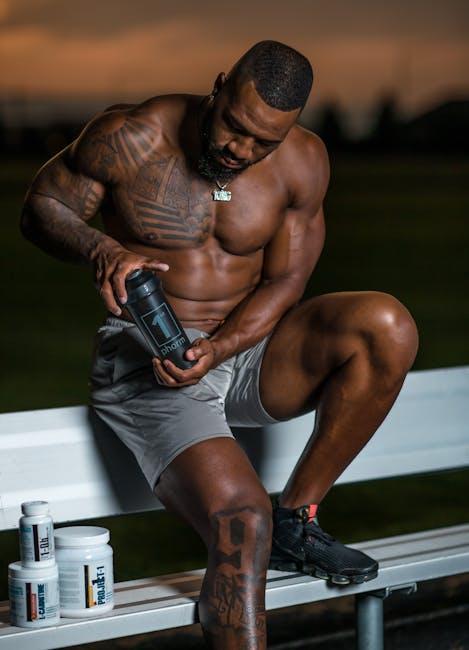Embarking on a journey to sculpt your body through strength training is not just about lifting weights—it’s about transforming your entire lifestyle to embrace health, resilience, and self-confidence. Whether you’re a novice stepping into the gym for the first time or an experienced athlete looking to refine your routine, strength training offers a multitude of benefits that extend beyond the physical. In this guide, we will explore the fundamental principles of strength training, tailored exercises to target key muscle groups, and strategies to keep you motivated and on track. Get ready to unlock your potential, build a stronger you, and achieve the sculpted physique you’ve always envisioned. With the right mindset and tools, the path to a healthier, more empowered version of yourself is well within reach.
Master the Basics for a Strong Foundation
Before diving into advanced techniques and complex workout routines, it’s crucial to establish a solid understanding of the fundamental movements and principles of strength training. Building a strong foundation not only helps prevent injuries but also ensures that you get the most out of your workouts. Here are some key elements to focus on:
- Form and Technique: Proper form is non-negotiable. It’s better to lift lighter weights with perfect form than to risk injury with heavier weights. Focus on maintaining the correct posture and alignment during exercises.
- Core Strength: A strong core is the cornerstone of any effective strength training program. It supports your spine and aids in performing exercises with greater stability and efficiency.
- Consistency: Establish a regular workout routine that fits into your lifestyle. Consistency is more effective than sporadic bursts of intense exercise.
- Rest and Recovery: Allow your muscles time to repair and grow stronger. Adequate rest and sleep are just as important as the workouts themselves.
Embrace these basics with enthusiasm and patience, knowing that each session is a step closer to a stronger, more sculpted you.

Choose the Right Equipment for Your Goals
When embarking on your strength training journey, selecting the appropriate gear is pivotal to your success. The right equipment not only enhances performance but also minimizes the risk of injury. Begin by assessing your specific fitness goals. Are you aiming to build mass, increase endurance, or improve overall strength? Each goal demands different tools and techniques.
- Dumbbells: Ideal for beginners and versatile for various exercises. They help in isolating muscles and improving stability.
- Barbells: Perfect for those looking to lift heavier weights and target multiple muscle groups simultaneously. Consider adjustable barbells for flexibility.
- Kettlebells: Great for dynamic movements and improving cardiovascular endurance while building strength.
- Resistance Bands: Excellent for those who want to add resistance without heavy weights. They’re portable and suitable for a wide range of exercises.
- Weight Benches: A staple for exercises like bench presses and other strength workouts. Choose one that is sturdy and adjustable.
Invest in quality equipment that aligns with your aspirations, ensuring that each piece contributes to a balanced and effective workout regimen. Remember, your choice of equipment should evolve as your strength and abilities grow, keeping your training dynamic and engaging.

Create a Balanced Routine for Optimal Results
To achieve the best results in your strength training journey, it’s essential to craft a routine that harmonizes intensity, rest, and variety. A balanced approach not only enhances your physical gains but also keeps you motivated and reduces the risk of injury. Here are some key components to consider:
- Variety is Key: Incorporate a mix of exercises targeting different muscle groups to ensure all-around development. This could include compound movements like squats and deadlifts, alongside isolation exercises such as bicep curls and tricep extensions.
- Rest and Recovery: Schedule rest days and prioritize sleep to allow your muscles to repair and grow. Remember, muscles are built during rest, not during workouts.
- Consistency Over Intensity: Commit to regular workouts, aiming for at least three to four sessions a week. Consistency will yield better long-term results than sporadic, intense sessions.
- Progressive Overload: Gradually increase the weight or resistance to continue challenging your muscles. This principle is crucial for continual growth and strength improvements.
By integrating these elements into your routine, you’ll create a sustainable and effective plan that not only sculpts your body but also boosts your overall well-being.

Fuel Your Body for Success and Recovery
To truly maximize your strength training regimen, it’s crucial to focus on what fuels your body both before and after your workouts. Proper nutrition acts as the cornerstone of your fitness journey, providing the energy needed for intense workouts and aiding in the recovery process. Here are some key nutritional strategies to help you sculpt your body effectively:
- Prioritize Protein: Consume a protein-rich meal or snack before and after your workout to help repair and build muscle tissues. Consider options like lean meats, eggs, or plant-based proteins such as beans and lentils.
- Carbohydrates for Energy: Incorporate complex carbohydrates such as whole grains, fruits, and vegetables into your diet to fuel your workouts and replenish glycogen stores post-exercise.
- Stay Hydrated: Hydration is vital for optimal performance and recovery. Drink water throughout the day, and consider adding electrolytes to your hydration routine during intense training sessions.
- Healthy Fats: Don’t shy away from healthy fats found in avocados, nuts, and olive oil. These can provide sustained energy and support overall well-being.
- Timing Matters: Try to eat a balanced meal 1-3 hours before working out and refuel within 30-60 minutes after exercise to optimize muscle recovery and growth.
By integrating these nutritional strategies into your routine, you will not only enhance your performance but also ensure your body is well-equipped to recover and grow stronger, bringing you one step closer to achieving your fitness goals.
